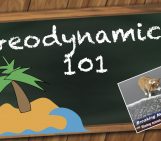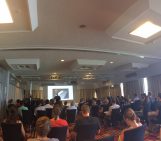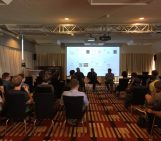
Every week, The Sassy Scientist answers a question on geodynamics, related topics, academic life, the universe or anything in between with a healthy dose of sarcasm. Do you have a question for The Sassy Scientist? Submit your question here.
Senna asks:
I’m torn between mantle dynamics and lithosphere dynamics as a research topic. Which shall I choose?
Dear Senna,
I don’t know what came over me when writing last week’s post. Must have been something I ate. Sometimes I just get some crazy idea stuck in my head. For example, I completely misconstrued ideas on the relative importance of mantle convection over lithosphere dynamics.
Last week I was babbling on about plate tectonics, and how the focus on the lithosphere shifted attention away from mantle convection. To be clear: this was for good reason. Granted, McKenzie and Parker’s (1969) concept of rigid plates on a shell was simplified. That was also the point: it explains some first-order observations like relative plate motions and seismicity. No, plate boundaries are not necessarily narrow zones of deformation (Kreemer et al. 2014). Yes, plates can also be flexed through loads on top, or radial mantle tractions from below (Watts 2001). We know that the Earth’s lithosphere can generally be considered to be a visco-elastic plate that is primarily moved by forces acting at its boundaries. Does this preclude seismicity or deviations from principal stress directions far away from such plate boundaries? Of course not.
It is obviously a great idea to base model predictions on non-unique gravity and geoid observations, seismic tomography, and Earth’s normal mode undulations for structures 2500 km away from the surface. The surface. You know, that place where we actually have direct observations. Sure, just extrapolate some rheology measured on a rock sample down to the lower mantle using some equations of state. Should be similar, right? Do you have a kinematic plate tectonic reconstruction based on loads of geological and paleomagnetic data? Just pop it into a mantle convection model to see whether it is feasible. You measured some SKS splitting data? That’s definitely a measure of present-day mantle flow. You infer instantaneous dynamic topography at the surface in the order of a couple 100 meters? Mantle convection models predict kilometers of instantaneous dynamic topography, so you must have made a mistake in your observations.
Do you want to understand what’s driving deformation of the lithosphere? Choose lithosphere as a research topic. Do you believe in fairy tales? Look into mantle convection: it’s full of magic.
Yours truly,
The Sassy Scientist
PS: This post was written after recovering from a major headache from reading last week’s post.
PS2: I won’t be surprised if there is going to another post on this topic next week. How well do you know your Scottish literature?
References: Kreemer, C., G. Blewitt, E.C. Klein (2014). A geodetic plate motion and Global Strain Rate Model, Geochemistry, Geophysics, Geosystems, 15, 3849-3889, doi:10.1002/2014GC005407 McKenzie, D., and R. L. Parker (1967), The North Pacific: An example of tectonics on a sphere, Nature, 216, 1276 Watts, A. B. (2001), Isostasy and flexure of the lithosphere, Cambridge University Press, 458 pp.




